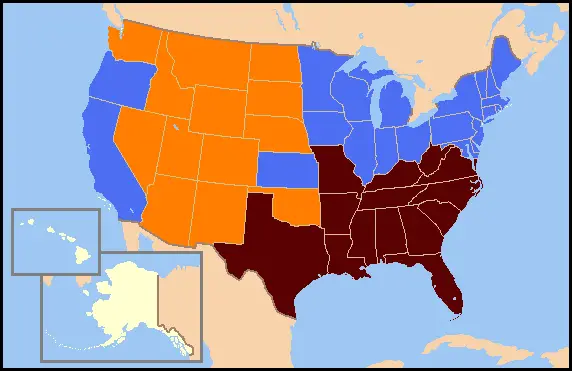Just as cells are basic to biologists, and periods/eras are essential to historians, regions are basic to geographers.
It gives them a way of differentiating different areas of the world to aid their analysis.
Geographers also need to choose how to define those regions.
A Formal Region is just one way of doing it. It uses the homogeneity of an area as its criterion.
By using one or more homogeneous characteristics that are shared by its population or geography, geographers can define a formal region.
What is a Formal Region?
A formal region denotes an area that is defined by universal or common characteristics like language, political system/affiliation, nationality, religion, culture, and geographical features (climate, landforms, vegetation, etc).
A formal region can also be defined as any geographical region whose boundaries are well defined, its area is established, and has no dispute or disagreement over the area it occupies.
(Well-defined boundaries in the above definition can also be termed as official boundaries to denote that they are set up by the authorities or governments. Therefore, they are not disputed by any party).
Formal regions can also be called homogeneous or uniform regions to reflect the commonness of an attribute (language, political system/affiliation, nationality, religion, culture, and geographical features) found in them.
Cities, towns, counties, states, and nations are formal regions that stand in contrast to vernacular regions whose boundaries can be debatable among different people.
Learn more about vernacular regions here: Vernacular Region: Meaning, Examples, & FAQs
Formal Region Examples

One of the easiest ways of recognizing a formal region is by looking at countries. These tend to have certain universal characteristics that define them.
One of these is a political boundary that marks it out as a nation or state.
Another is if it has a commonly spoken language that helps to distinguish it from neighboring areas.
Some formal regions can also be demarcated by geographical features such as the Himalayas mountains which mark the borders of some countries like Nepal and Bhutan.
Here are some of the top examples of formal regions around the globe:
1. European Union
The European Union (EU) is an economic and political amalgamation of 27 European nations.
Initially known as the ECC (European Economic Community) that entered into force in 1958, this union is aimed at enhancing post-war cooperation between member states with a view to ensuring economic stability and peace within the continent.
Some of the EU’s founding members include Italy, Luxembourg, Netherlands, Germany, Belgium, and France.
Currently, the EU region has a populace of approximately 447 million and covers a landmass of around 4.2 million KM2.
It qualifies as a formal region since it is a legally acknowledged area, with clear political boundaries.
These boundaries are agreed upon by residents of all member states and the rest of the globe.
2. The Corn Belt
Just as the name suggests, the Corn Belt is an area in the United States reputed for its sizable corn production.
This region is officially acknowledged by USEPA (the United States Environmental Protection Agency) as a Level III ecoregion based on its distinct land use.
It comprises Eastern, Central, and Western contiguous sub-regions, stretching from Nebraska to Indiana.
In addition to clearly defined boundaries, this formal region is also heterogeneous given that there is a shared attribute of corn cultivation within the area.
3. Uttar Pradesh
This is one of the most populous states in northern India and is ranked among the most populous national subdivisions in the world.
Established after India’s independence in 1950, Uttar Pradesh has over 200 million residents and is home to a wide array of natural features with religious significance such as the Yamuna and Ganges holy rivers.
While its Western and Eastern topographies are very different, Uttar Pradesh still qualifies as a formal region due to its administrative homogeneity.
This region has well-defined administrative boundaries and encompasses other smaller formal regions including 75 districts and 18 divisions.
4. Asia
As a formal region, Asia is defined scientifically as opposed to politically.
This landmass is one of the world’s seven geographical continents mapped out by scientists in accordance with the positioning of their tectonic plates.
Geographically, Asia sits on a landmass bounded by the Arctic Ocean to the north, the Pacific Ocean to the east, and the Indian Ocean to the south.
Using this map, it is possible to identify scientific boundaries for this continent, which are also recognized by leaders from other parts of the world.
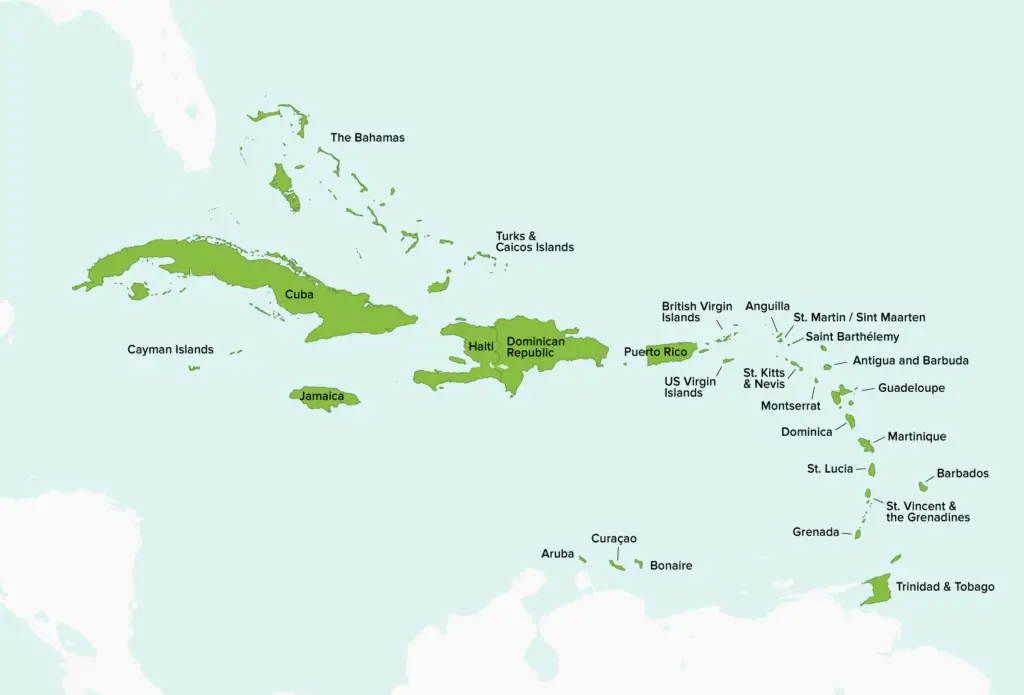
5. The Caribbean
This is a formal area of the Americas delineated on account of its distinct landform and political affiliation.
Politically, the Caribbean is acknowledged as an official region in the United Nations geo-scheme for the Americas and comprises multiple socio-economic unions for member states including ACS (Association of Caribbean States) and CARICOM (Caribbean Community).
Geographically, this region is made up of a chain of islands that border the North Atlantic Ocean and the Caribbean Sea.
Some of the island states that make up this formal region include Cuba, Dominican Republic, Anguilla, Jamaica, and Puerto Rico.
6. The Arctic Circle
Another example of a formal region that is defined scientifically is the Arctic Circle.
This is the northernmost hemisphere of planet Earth whereby the sun does not rise or set for at least one day annually, most notably on 21st June and 21st December.
This unusual attribute is brought about by the earth’s tilted position.
The Arctic Circle comprises all states that are located north of the 66th parallel north latitude circle.
Ideally, the 66.3-degree latitude circle is the Arctic Circle’s sole boundary.
Examples of Arctic Circle countries include Finland, Norway, Greenland, and Sweden.
7. Northern Africa
This is the northern area of the African continent stretching from the Suez Canal in Egypt to the Atlantic coast in Mauritania.
It is made up of Africa’s northern states, such as Tunisia, Egypt, Morocco, Algeria, and Libya.
While the people of this region do not share a similar cultural identity, their religion and linguistic connotations are primarily borrowed from Middle Eastern culture.
However, the primary homogenous attribute that qualifies Northern Africa as a formal region is its shared climate.
With the Sahara Desert covering the whole region, Northern Africa is known for its extremely arid climate.
8. The Himalayas
The Himalayas are a set of mountain ranges located in Asia. These mountainous landforms separate the Tibetan Plateau from the Indian subcontinent’s plains.
They were formed as a result of the subduction of India’s section of the Eurasian Plate and cover an arc of around twenty-five thousand kilometers between the Yarlung Tsangpo River and Nanga Parbat.
These ranges comprise more than 100 peaks with a minimum elevation of 23,500 ft.
The Himalayas’ consistent geographical attribute of mountainous landforms makes it an ideal example of a scientifically defined formal region.
9. Clark County School District
Clark County School District (CCSD) is a local governmental jurisdiction that is an administrative subset of the state of Nevada.
It encompasses about 300,000 school-going children in Boulder City, Las Vegas, and Henderson.
This is a formal geographic unit due to its administrative homogeneity.
It serves as a special purpose entity of the state’s government, designated with managing all of the region’s secondary or elementary education affairs.
CCSD is officially recognized under Nevada’s state law and is allowed ample fiscal and administrative autonomy to qualify it as a separate administrative entity.
10. The Ocean
Around 70% of the Earth’s surface is covered by a continuous body of salty water known as the ‘world’s ocean’.
It accounts for almost 97% of all the water in the globe as it occupies a total volume of 324 million mi3.
Despite being a continuous geographical unit, oceanographers have subdivided it into four distinct areas, namely, the Arctic, Indian, Pacific, and Atlantic Oceans.
More recently, scientists named the icy waters of Antarctica the 5th Ocean (Southern Ocean).
Combined, this geographical space qualifies as a formal region on account of the ocean’s consistent geographical attribute.
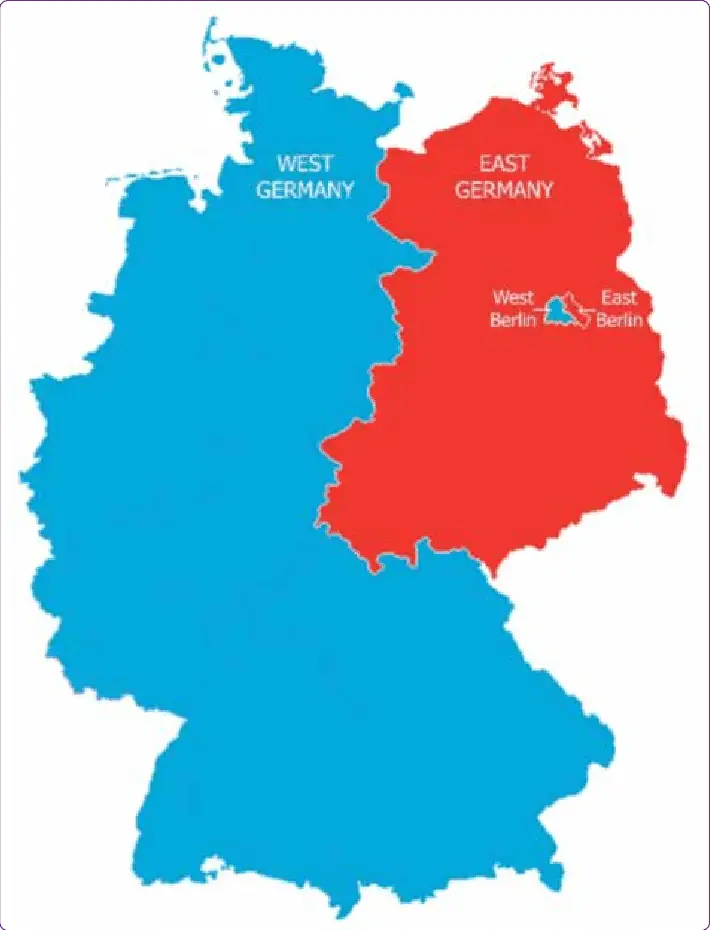
11. West and East Berlin
Prior to 1989, present-day Germany was divided into West and East Berlin.
These were formal political units developed as part of the post-World War II agreement between the Soviet Union and Allied Powers.
Since none of the parties would let the other assume full control of Berlin, they decided to split it into two with the Allies taking the west and the Soviets taking the east.
These regions were so formal that the infamous Wall of Berlin was erected to separate them.
The two regions were reunified after the decline of communism in 1989.
12. Yellowstone National Park
Yellowstone National Park sits on a vast 3,500 square mile geographical area littered with dramatic canyons, hot springs, geysers, forests, and alpine rivers.
It is home to a wide array of plant and animal species and is located in Wyoming’s northwestern hemisphere.
This large tract of land has clearly set boundaries and is under the federal jurisdiction of the NPS (National Park Service), making it a formal region.
13. States in the US
The US itself is a formal region because it has clearly delineated boundaries and there is no disagreement over the area it occupies.
Each of the 50 states composing it are also perfect examples of formal regions because they have distinct boundaries and share common attributes like political system, language, climate, etc.
To give you a clear picture, let’s discuss a few states below:
A. New York
The State of New York is located in the Northeastern part of the country.
It is bordered to the south by Pennsylvania, to the east by Vermont, and Canada to the north.
New York is highly reputed as the United States capital for international business given that it is home to Wall Street, Silicon Valley, and Tech Valley.
As a formal region, New York has clearly delineated boundaries that ensure the state operates as a separate jurisdiction unit.
B. Texas
Texas is a formal region since it’s a state with administrative or political boundaries. It is the second-biggest state in the US.
In the US electoral map, Texans also stand out for being a red state, or a strongly Republican-voting state.
In contrast to neighboring states lacking this consistency, Texas has always voted Republican since 1980.
Texas also features some distinctive geographical features such as the Red River which marks the boundary between it and Oklahoma to the north.
Texas also has the largest production of cattle which has given it the cowboy image.
C. Hawaii
It consists of an archipelago of islands that have a separate physical existence from the US mainland.
This distinguishes it as a formal region since it is the only state that consists only of islands.
Also, unlike other states, it shares no borders with any other state.
Apart from English, the Hawaiian language is widely spoken as its official language.
This makes it a formal region; it’s the only area where the language is an official language in the US or anywhere else.
D. Florida
It has boundaries as a state which makes it a formal region.
Its climate is also very sunny giving it the name Sunshine State.
Florida also has unique geographical features to mark it such as it is a peninsula surrounded by water on all its sides except the north.
This gives it 3 coastlines. It’s also the southernmost part of the US.
Another defining feature is its high alligator numbers and also unusual weather that makes it lead in the number of hurricanes and tornadoes.
14. USSR
The Union of Soviet Socialist Republics (USSR) was a transcontinental region comprising communist nations that had ties to Russia.
This political bloc disintegrated after the collapse of communism in 1989, causing all the regions to break up into present-day nations, such as Ukraine, Poland, and Russia.
The USSR’s boundary stretched across much of Eurasia and the region was internationally recognized as a politically and economically defined area.
15. Graubünden
Also known as Grisons, Graubünden is among the 26 Swiss cantons.
Its capital is the city of Chur and it is subdivided into 11 distinct sub-regions.
Being that Switzerland is a multilingual country, Graubünden qualifies as a formal region based on the populace’s shared dialect.
Residents of this canton are all Romansh speakers, a language that is indigenous to this region and one of the four Swiss dialects.
Limitations of Formal Regions
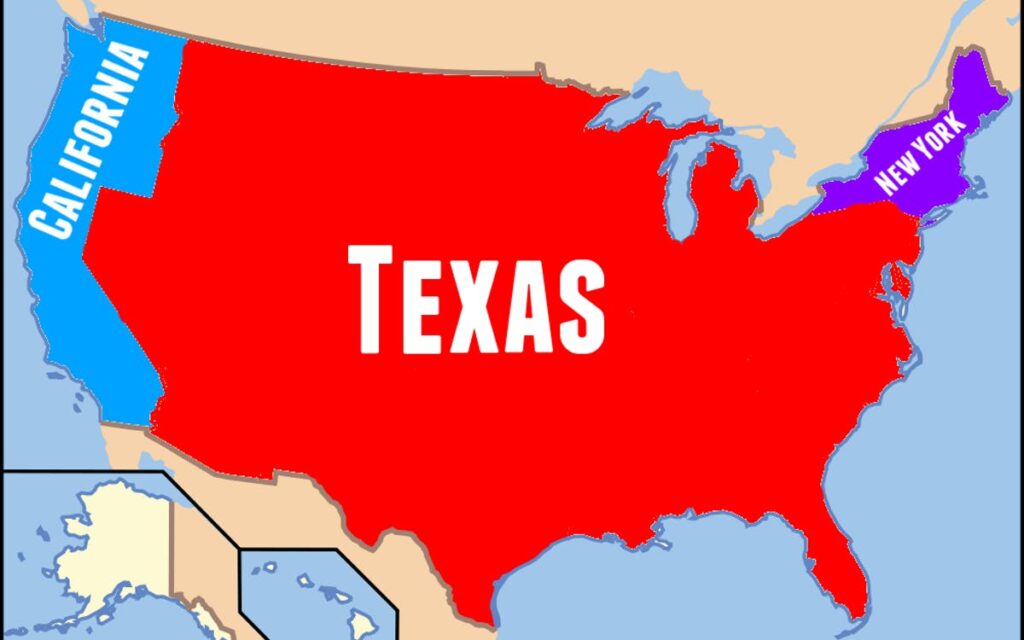
Formal regions are typically too generalized because the attribute used to define them is not always universal in the region.
For example, you can use the electoral map to define the District of Columbia as Democratic voting.
However, not everyone in the District of Columbia votes Democratic even though the majority votes Democratic.
Disputes on Formal Regions
A central assumption for the definition of a formal region is that its borders are not in dispute.
However, formal regions are not entirely without some disputes. For example, Italy and Austria were briefly locked in a territorial dispute.
This was after the mummified remains of a 5,000-year-old human (Otzi the iceman) was found by some tourists in an area between the two countries.
Although this case was finally resolved, other examples continue to simmer continuously.
For example, China frequently disputes Taiwan as part of its territory even though most of the world does not.
FAQs
Is North America a formal region?
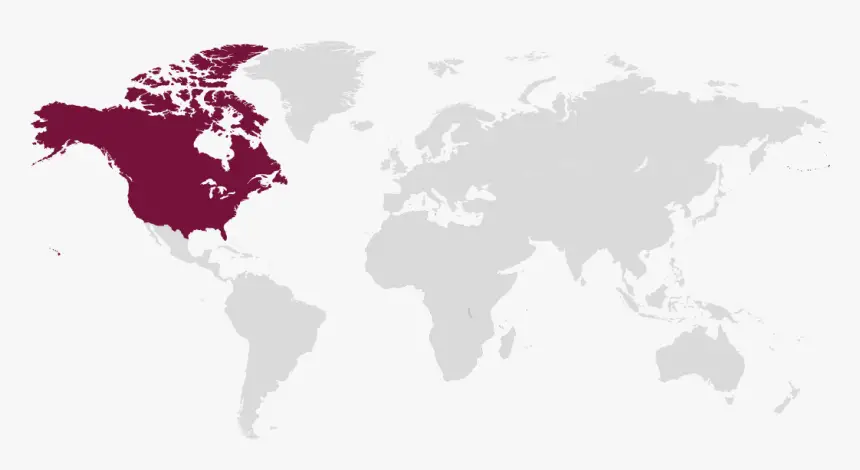
Yes, North America is a formal region since it’s a continent consisting of 23 countries.
This designation gives it a clear-cut boundary which makes it a formal region.
However, others consider North America as a subcontinent of America or the Americas.
In this case, it would be a formal region within another formal region.
Is Africa a formal region?
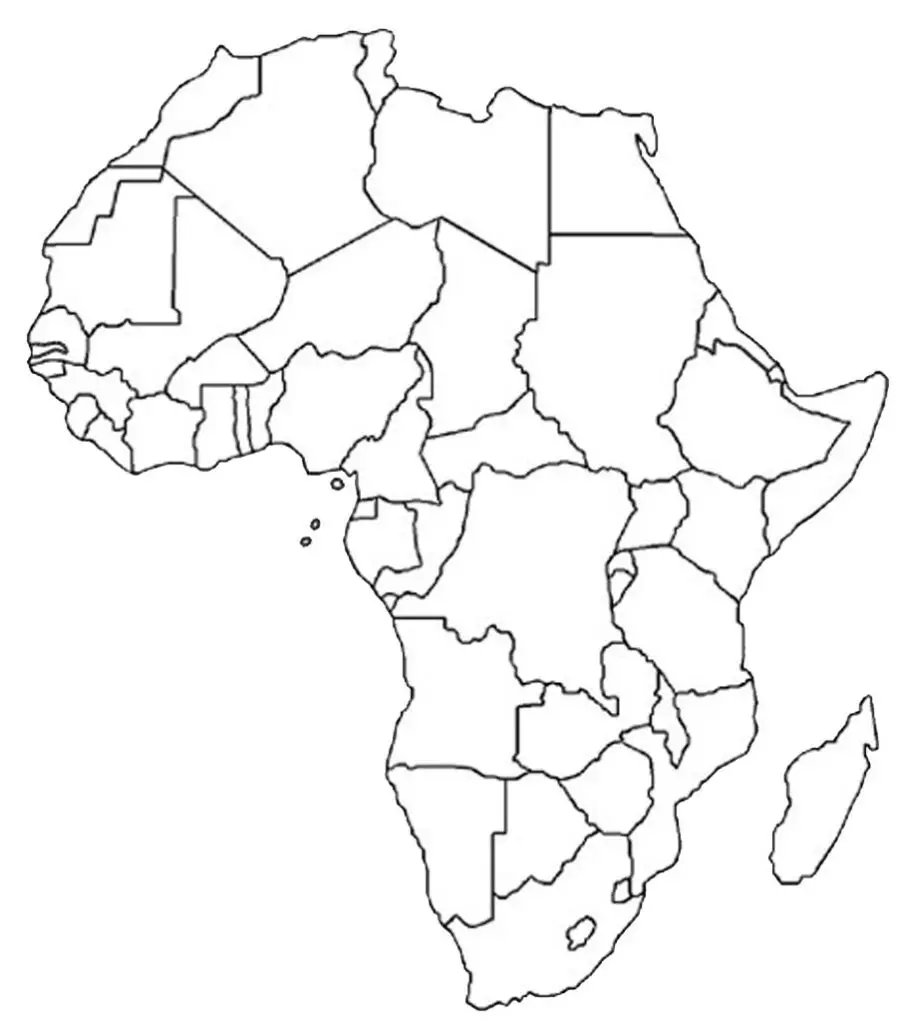
Due to its status as a continent, Africa can be considered a formal region.
Its continental boundaries are clearly defined and there is universal agreement about them.
Africa is also a unique spot that gives it a central location on the globe.
Both the prime meridians of longitude and latitude lines cross it. Since the equator crosses it almost in the middle, it has year-round direct sunlight which makes it the hottest continent. These climatic and physical attributes define it as a formal region.
The commonly perceived image of Africans as black-skinned cannot be used as a characteristic to define it as a formal region. This is because large parts of Africa like northern Africa are populated by Arabs.
Is Canada a formal region?

Yes, Canada is a formal region. This follows from the fact that it has political boundaries that are internationally recognized by all.
However, Canada sometimes experiences contests from its Quebec province. Occasionally, some of its members have expressed aspirations to be sovereign and separate from Canada.
Quebec is a French-speaking province which makes it distinct from the rest of Canada which speaks English.
Therefore, Quebec is a formal region within another formal region which is Canada.
If Quebec is excluded from Canada, then we would have to use different borders to define Canada as a formal region.
However, for the moment, Quebec is viewed as part of Canada, especially following two referendums in which Quebecers voted to remain part of Canada.
Is Japan a formal region?
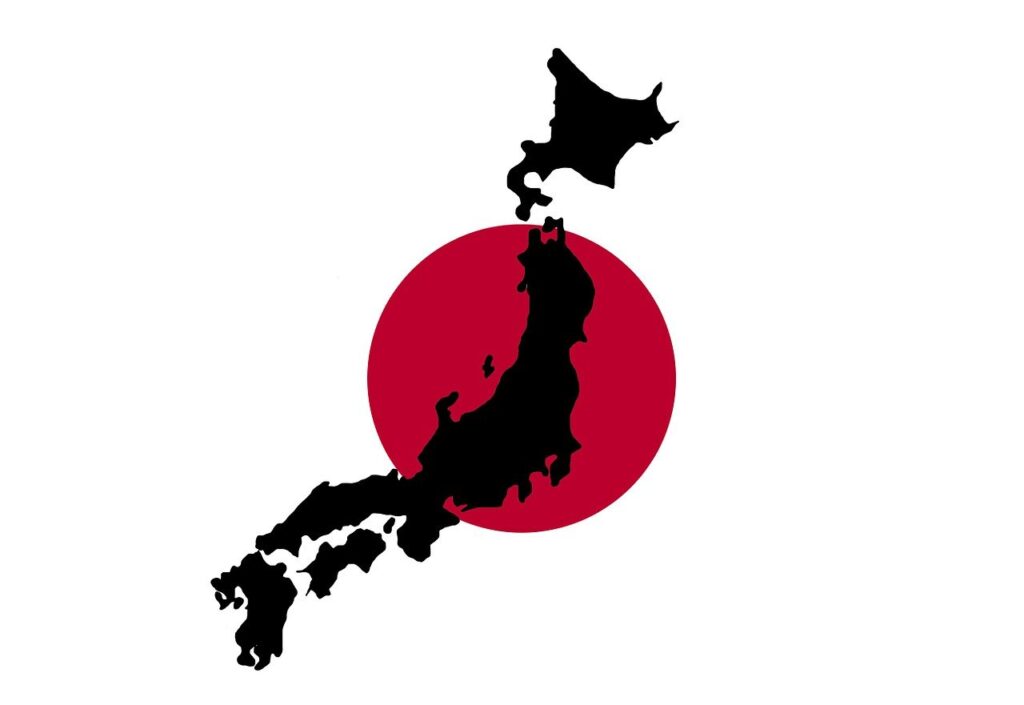
Japan is a formal region for various reasons. It is a distinct political unit with boundaries that are not in doubt.
It also consists of islands which gives it a unique geographical description. This can be used to define it as a formal region.
Japan is also distinct from its surroundings due to its peculiar culture.
The predominantly spoken language among its population is the Japanese language. This defines Japan as a formal region since outside its borders Japanese is rarely spoken.
The country is also located near four tectonic plates giving it a higher record of earthquakes than most countries.
Is Mexico a formal region?

Mexico is a formal region since it is a sovereign state with clearly recognized political boundaries.
Its Spanish language also defines it since it’s the official language with 90% of its population speaking it. This distinguishes it especially against the mainly English-speaking US which neighbors it to the north.
Its geographical feature of being very mountainous also defines it as a formal region since it has the highest average elevation in North America of 1,110 meters.
It has 3 mountain ranges in western, eastern, and southern.
Another criterion for it to be a formal region is its climate. Since the Tropic of Cancer runs through it, it has a warm and tropical climate throughout the year.
The Rio Bravo River (Rio Grande) is a geographical feature that marks part of its boundary with the US.
Another geographical feature defining it is its 2 peninsulas: the Yucatan peninsula and Baja California.
Further Reading: 10 Cultural Region Examples (Human geography)

